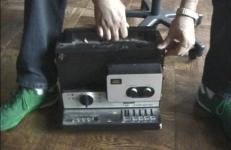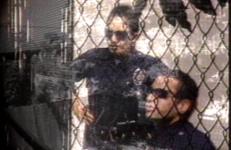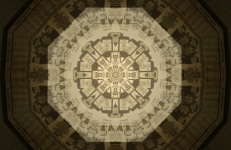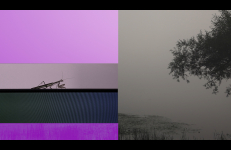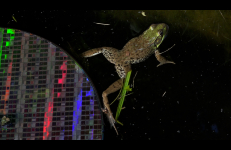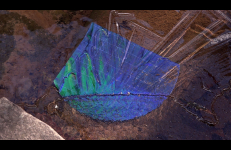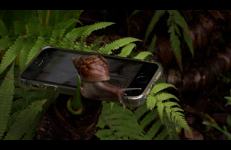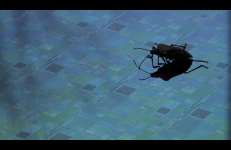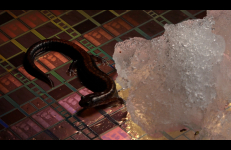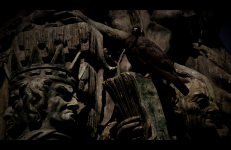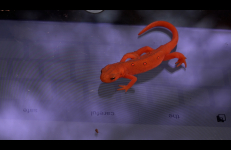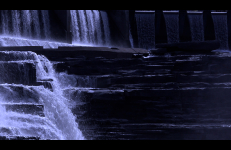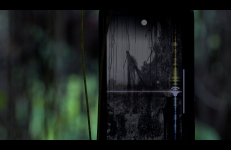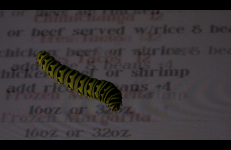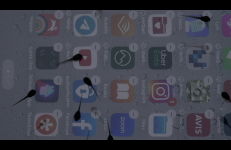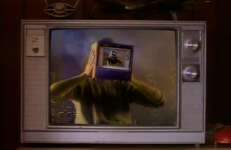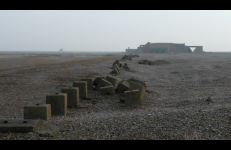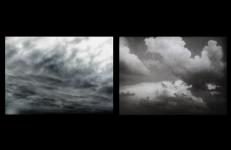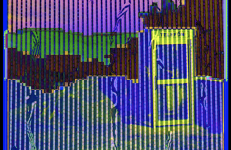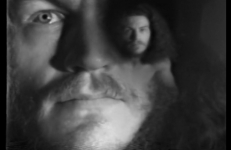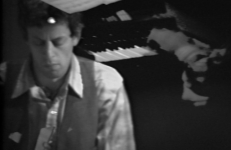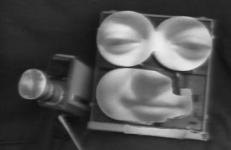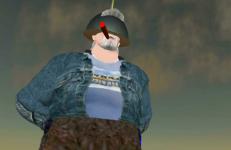This piece purports to be about the discontinuation of the much-loved format, Kodachrome, and with it the further endangerment of super-8 film. But it has other agendas of reclamation and personal reckoning that are its true subject matter.
Technology
This video highlights several narratives concerning video surveillance—not to reiterate the conventional privacy argument but rather to engage the desire to watch surveillance materials and society’s insatiable voyeurism. A variety of subjects recount their interactions with surveillance—getting caught in the act of stealing or watching pornography, being discouraged from making an illegal ATM withdrawal—and question technological determinism, asking whether we choose to develop technology or technology shapes our choices.
Growing up in the early computer age, around machines like the Commodore 64, had a formative effect on Marisa Olson and her subsequent artistic career. Now operating across a diverse spectrum of media including video, performance, and even the internet itself, she creates work that simultaneously comments upon and instrumentalizes the potential of digital machines as well as the global networks they’re linked to. However, her work is not circumscribed within the boundaries of these systems’ technical specificity.
On the Way to the Moon, We Discovered the Earth is a short film that remixes archival material from a prominent mainstream newspaper printed during the New York City Blackout in July 1977. The 1977 New York City Blackout is cited as the official birth of hip-hop, wherein looters took equipment that allowed them to formalize and professionalize hip-hop. Titled after a quote by an astronomer looking back at the Earth during the Apollo space mission, this kaleidoscopic film hints at a cultural moment of rupture and reinvention that transcends resilience.
Our Non-Understanding of Everything is a series of 16 videos that explore how the structures of architecture, semiconductors, and circuits become forms of expression reflecting hierarchies, cognitive processes, and relationships to the natural environment.
Our Non-Understanding of Everything is a series of 16 videos that explore how the structures of architecture, semiconductors, and circuits become forms of expression reflecting hierarchies, cognitive processes, and relationships to the natural environment.
Our Non-Understanding of Everything is a series of 16 videos that explore how the structures of architecture, semiconductors, and circuits become forms of expression reflecting hierarchies, cognitive processes, and relationships to the natural environment.
Our Non-Understanding of Everything is a series of 16 videos that explore how the structures of architecture, semiconductors, and circuits become forms of expression reflecting hierarchies, cognitive processes, and relationships to the natural environment.
Our Non-Understanding of Everything is a series of 16 videos that explore how the structures of architecture, semiconductors, and circuits become forms of expression reflecting hierarchies, cognitive processes, and relationships to the natural environment.
Our Non-Understanding of Everything is a series of 16 videos that explore how the structures of architecture, semiconductors, and circuits become forms of expression reflecting hierarchies, cognitive processes, and relationships to the natural environment.
Our Non-Understanding of Everything is a series of 16 videos that explore how the structures of architecture, semiconductors, and circuits become forms of expression reflecting hierarchies, cognitive processes, and relationships to the natural environment.
Our Non-Understanding of Everything is a series of 16 videos that explore how the structures of architecture, semiconductors, and circuits become forms of expression reflecting hierarchies, cognitive processes, and relationships to the natural environment.
Our Non-Understanding of Everything is a series of 16 videos that explore how the structures of architecture, semiconductors, and circuits become forms of expression reflecting hierarchies, cognitive processes, and relationships to the natural environment.
Our Non-Understanding of Everything is a series of 16 videos that explore how the structures of architecture, semiconductors, and circuits become forms of expression reflecting hierarchies, cognitive processes, and relationships to the natural environment.
Our Non-Understanding of Everything is a series of 16 videos that explore how the structures of architecture, semiconductors, and circuits become forms of expression reflecting hierarchies, cognitive processes, and relationships to the natural environment.
Our Non-Understanding of Everything is a series of 16 videos that explore how the structures of architecture, semiconductors, and circuits become forms of expression reflecting hierarchies, cognitive processes, and relationships to the natural environment.
Ouroboros: Music of the Spheres is Chapter 3 of Mysterium Cosmographicum.
"Positing a linear continuum, with 'nothing' at one end of the spectrum and 'something' at the other, at what point does 'nothing' become 'something?'"
Over The Horizon is a moving image installation that takes its name from the failed radar system developed on Orford Ness in Suffolk during the Cold War. The building that housed it and its aerial field are now used to broadcast the BBC World Service to Europe. Over The Horizon revisits the site where my earlier film Cobra Mist was made and explores through photography and sound the memory of a place, the remnants of history and evidence of stories true or rumoured.
The four‐part cycle Parallel deals with the image genre of computer animation. The series focuses on the construction, visual landscape and inherent rules of computer-animated worlds.
“Computer animations are currently becoming a general model, surpassing film. In films, there is the wind that blows and the wind that is produced by a wind machine. Computer images do not have two kinds of wind.”
-- Harun Farocki
People enjoy my company connects the privatisation of telecommunications with techno-optimism, euphoria and online communication in the lead-up to the millennium.
The film explores the privatisation of the Irish state-owned telecommunications company Telecom Éireann from the viewpoint of shareholders communicating on early online forums. The event is contextualised within ideologies of technological emancipation in the pre-millennium period.
The first twelve minutes features Phil keying his own image over his left eye (right on the screen), where he smokes and performs various facial gestures. The audio begins with background static noise, but part way through, it changes to a puzzling sound effect that he explains later.
Philip Glass, a pioneer in minimalism in music, gave a two-day lecture at the School of Art Institute of Chicago in 1974. In musical composition, minimalism highlights the repetition of melodic fragments, harmonic progressions, rhythmic structures, etc. Glass’s music is often steady in terms of volume and tempo, then, when introducing slight alterations, the pattern changes become notably audible.
This eight-minute video is part experimental video art, part sketch comedy routine, and part informational lesson on the advantages and disadvantages of owning Sony's latest video technology. In it, David and Carol participate in a brilliantly theatrical, seemingly improvisational conversation, in which each one adopts the specific identity and perspective associated with a particular video technology: David plays the part of the Sony Camera AVC 3400, while Carol takes on the personality of the Sony Portapak AV3400.
Phil Morton starts the conversation by discussing an engineering project at the University of Wisconsin which was developing an early video communication system over satellite. Phil predicts the use of live-transmission of audiovisual elements for jamming purposes; his visionary thought resembles Marshall McLuhan’s prediction about the internet and social media. With the availability of a home terminal that transmits signals in real-time, the “system becomes a radical educational learning experience.”
If second lives have grown into the landscape of social network space and avatars engage a full range of human emotions and experience, it follows that they would eventually encounter existential questions. A plot of land is purchased in the online network of SecondLife and a simple questions is asked: Where do discarded 3D objects go and can we build a dumpster to accommodate them? To find out eteam set aside a year to let this virtual land use problem unfold and what is captured in Prim Limit is the lived experience of avatars managing and recording this dumpster.




